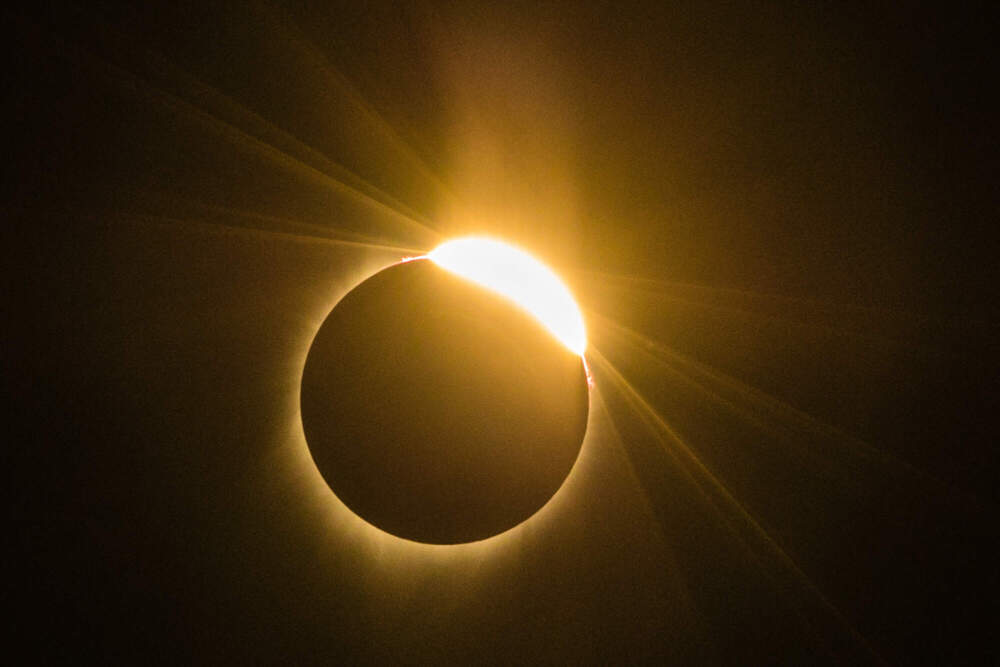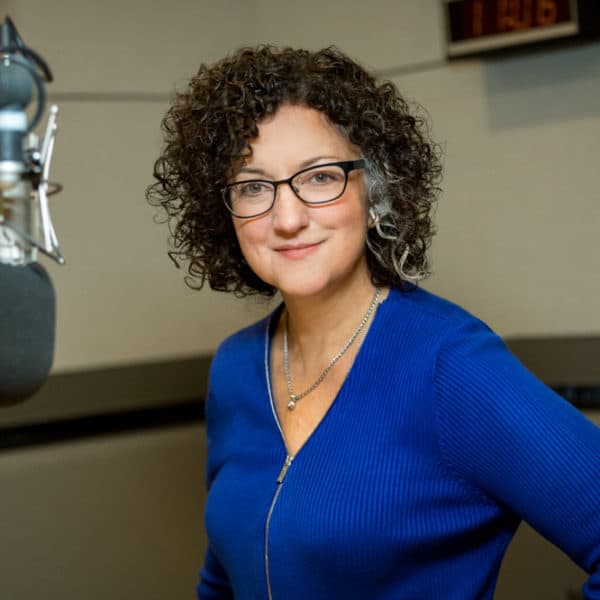Advertisement
Where to experience a total solar eclipse in April
Resume
On April 8, the total solar eclipse will sweep across the U.S.
From Texas to Maine, 13 states will be in the path of totality — when the moon completely obscures the sun. First, the sky darkens and stars come out. Then the once-glowing sun turns black and is surrounded by a ring of fire.
“The arrangement of the heavens is aligned,” says Kelly Beatty, senior editor at Sky & Telescope Magazine. “The sun and the moon and the Earth are in a perfect alignment. The moon casts its shadow on the earth. You literally can stand in the moon's shadow.”
The last time parts of the U.S. saw a total solar eclipse was in 2017. North America won’t experience a total solar eclipse again until 2044.
This time around, the path of totality is only about 120 miles wide. Parts of the country from the Southwest to the Northeast — from Dallas, Texas, to Cleveland, Ohio, to Buffalo, New York — will see the sun completely covered.
The rest of the U.S. will see a partial solar eclipse. In other areas, the sky will darken, though not entirely. In Seattle, 20% of the sun will be covered, Beatty says, while Boston will see 93% of the eclipse.
“The closer you are to the path, the deeper the bite will be,” he says.
The entire eclipse will last about two and a half hours, but people within the path of totality will see it for up to four and a half minutes, Beatty says.
Within the path, hotels are booked up and charging high rates for a stay during the eclipse. Delta has a flight where you can follow the eclipse from the sky, which sold out in less than 24 hours. And some music festivals will take place during the event.
Beatty plans to celebrate the eclipse at a party of 250 people in Fredericksburg, Texas.
“Some people want to be all by themselves so they can just take in the aura of the event. And it can be very spiritual, very life-changing in some ways,” Beatty says. “And then other people just want to party.”
But whether you’re spending the eclipse alone or among a crowd, Beatty says to purchase solar eclipse glasses to safely look up at the sun.
Leftover glasses from the 2017 eclipse will still work as long as they’re not cracked or damaged, he says. And he recommends checking your local library for glasses.
“If you need [glasses], order them now because they will be sold out, I am sure, in most places,” Beatty says.
Samantha Raphelson produced and edited this interview for broadcast with Catherine Welch. Allison Hagan adapted it for the web.
This segment aired on March 8, 2024.


